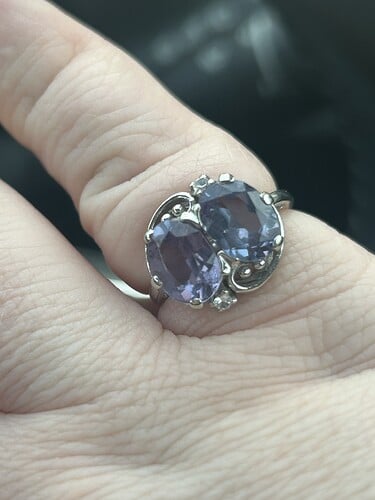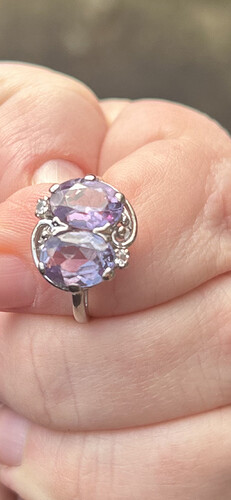Hi,
I’d like some help identifying a ring that has been passed down to me. My father in law bought it for my mother in law when he was stationed in Japan in the early 50’s. My husband was told all his life it’s alexandrite, could anyone shed some light for me?
Hi there hun, I would suggest going onto the IGS education page. If you go in to the buying and or pricing guid and the top the of the page, in the right hand corner it says it will say alexandrite profile. I hope that this will help a bit but to be very honest with such a high value gem it is best to have it tested by a trusted and well knowen lab as there are many convinsing synthetics that have been available from the 1940’s ± so there are so really good fakes out there… it could also be a colour changing sapphire or garnet though it is really tough to asses the gems with out lab equipment. I would say just from a picture it is difficult but som gems can be semi identified over the net but when it comes to high value gems like Alexandrite it is best to lab test ![]() though in my many years of gems & jewellery work I have only ever seen the synthetic gems and lots of natural rough from Tanzania and Zimbabwe but all the cut gems from old rings have been fake so to be honest my rule of thumb with alexandrite is to always expect the worst until tested and proven.
though in my many years of gems & jewellery work I have only ever seen the synthetic gems and lots of natural rough from Tanzania and Zimbabwe but all the cut gems from old rings have been fake so to be honest my rule of thumb with alexandrite is to always expect the worst until tested and proven.
Regrets and best regards
Jarryed.
Alexandrite also has to show color change, so you could use sunlight then candle light to see if the color changes even a bit. And like the other member said, if they are true natural alexandrite that clean and size you have a expensive piece, so definitely worth having it checked out by a gemologist or even a laboratory if you can.
Yes, alexandrite is expensive especially when they are iver 1 ct. I have a few and one with a mini cert from an Asian lab. But since they run very high and its only one piece the investment to have it certified is worth it.




